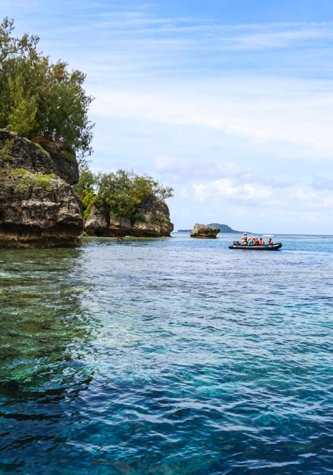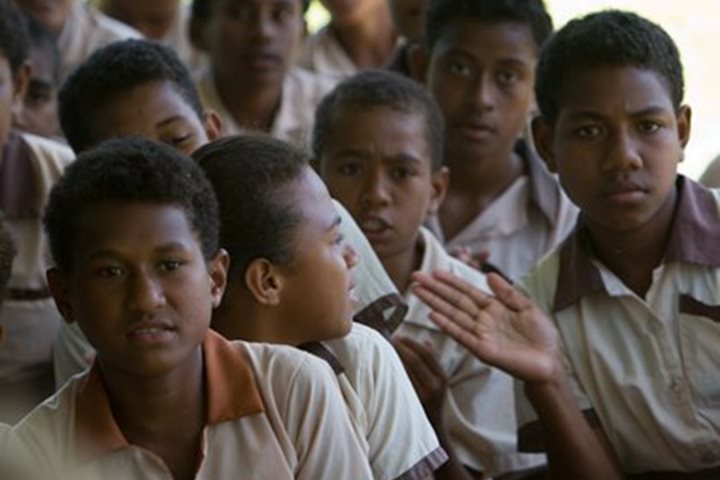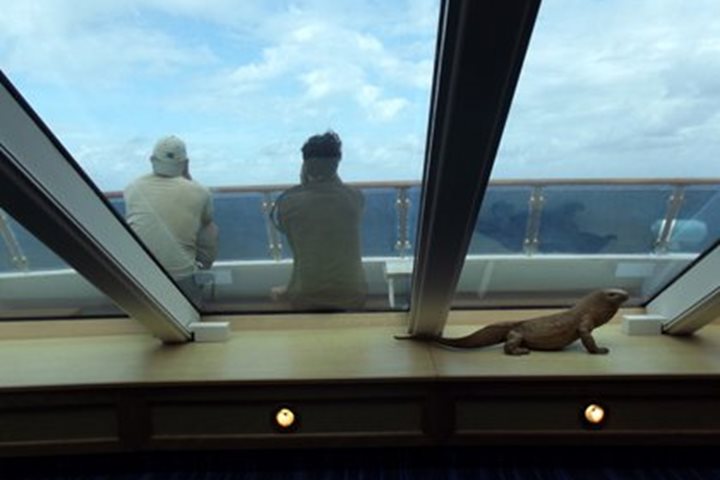Looking at the geological cross section of the cliffs that fall straight into the waters surrounding Lelepa Island, one can see that there is barely any soil. Volcanic ash has compressed into rock, known as tuff, and makes up the vast majority of the substrate. The prospect of any plant life being able to eek out an even stunted existence would seem a challenge and yet the island is a thriving tropical forest. Trees have taken a firm foothold and overtime generated their own soil and, while there is an absence of a towering canopy, the sea of deep green that crashes over the wavy contours of the ridgeline are a testament to adage that “life will find a way.”
We spent the morning Zodiac cruising over tantalizingly clear water, able to see the walls of coral stretching far beneath us from the sapphire blue waters. The kind of clarity that seems to allow for endless visibility, where one gets the sense the limiting factor is not the water itself but our own eyes. Flying fish would streak across the bow, gliding boggling distances on extended pectoral fins until they rather unceremoniously crash back to the wetter side of the surface. At times suspended close to matched speed of the boat, they appeared to be hovering, regarding us with what one would anthropomorphize as extreme bewilderment.
The island itself has its own surprises, such as the Feles Cave. Reaching a height of 35 meters and a depth of 47 meters, it provides a massive underground chamber to explore. The cave is a significant landmark for the nearby Efate village of Mangaas as it was where their greatest chief, Roi Mata, drew his last breath. He was buried on Artok Island, which can be seen from the entrance to the cave some three miles away. So respected was this man as a leader of his people that when he was being laid to rest, 50 members of his court and family sacrificed themselves to join him in death. To this day Artok Island is declared “tapu” and it is forbidden for anyone to step foot on it. As we press on to Fiji, we will remember the story of Chief Roi Mata and the legacy that protects and preserves such a valuable ecological haven.






